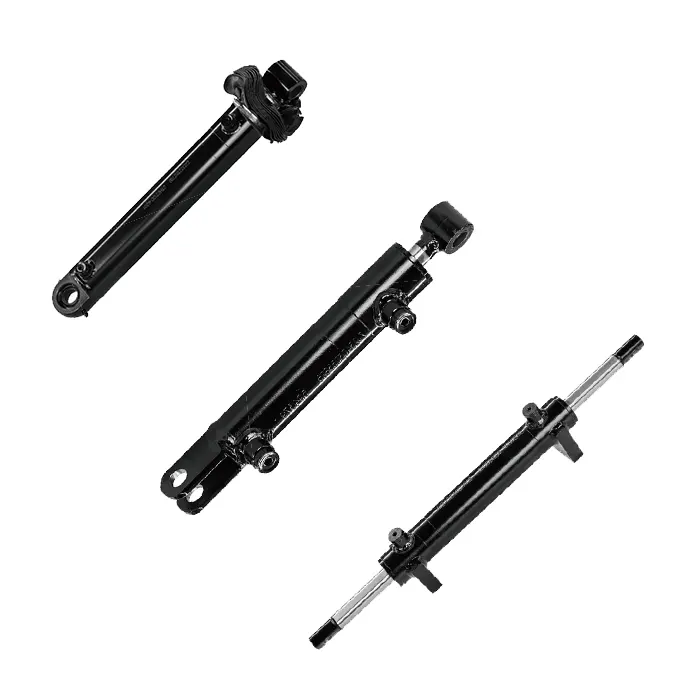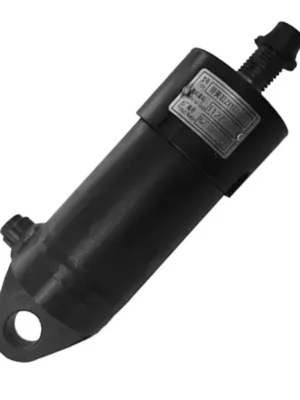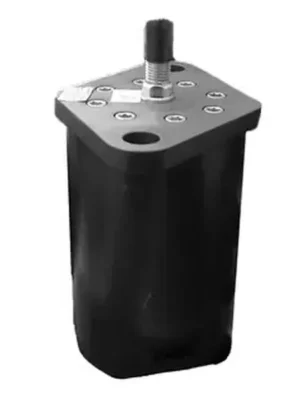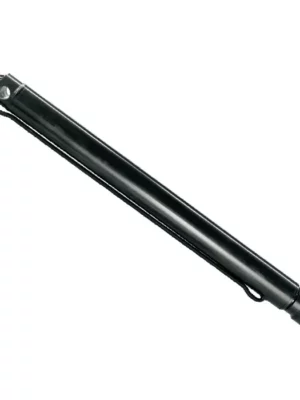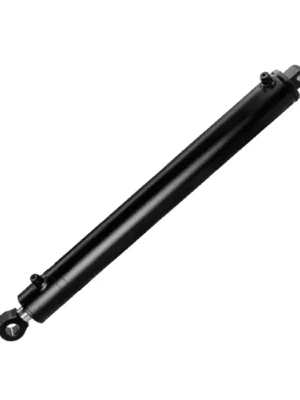In modern industrial machinery, the transmission chain is a key component that connects the power source and the actuator. Its design and performance directly affect the overall efficiency, reliability and service life of the machinery. Basic Structure and Function of...
Hydraulic Steering Cylinder for Aerial Work Vehicles Specifications
Steering Cylinder for Aerial Work Vehicles EPYY11112004
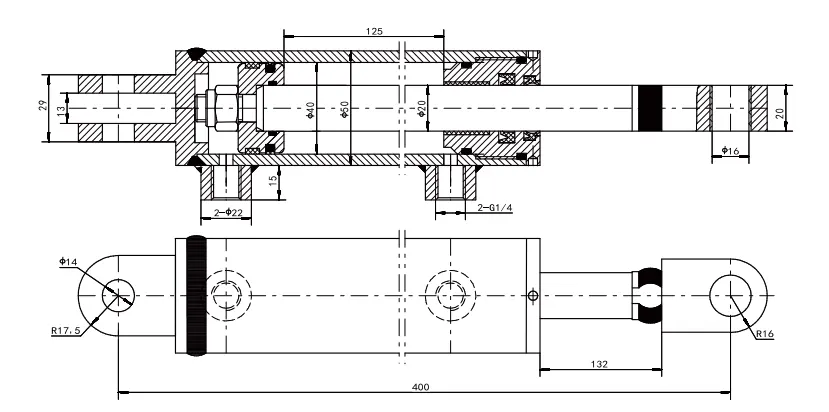
| Cylinder model | Specifications | Working pressure | Maximum withstand pressure | Trip | Installation distance | Ağırlık |
| EPYY11112004 | φ40×φ20×125 | 20MPa | 30MPa | 125 | 400 | 2.8kg |
Steering Cylinder for Aerial Work Vehicles EPYY11112007
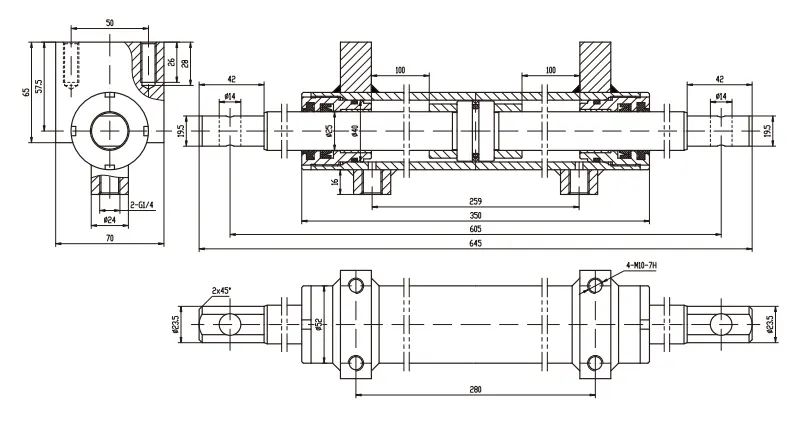
| Cylinder model | Specifications | Working pressure | Maximum withstand pressure | Trip | Installation distance | Ağırlık |
| EPYY11112007 | φ40×φ25×100×2 | 10MPa | 15MPa | 100×2 | 645 | 7kg |
Steering Cylinder for Aerial Work Vehicles EPYY11112012
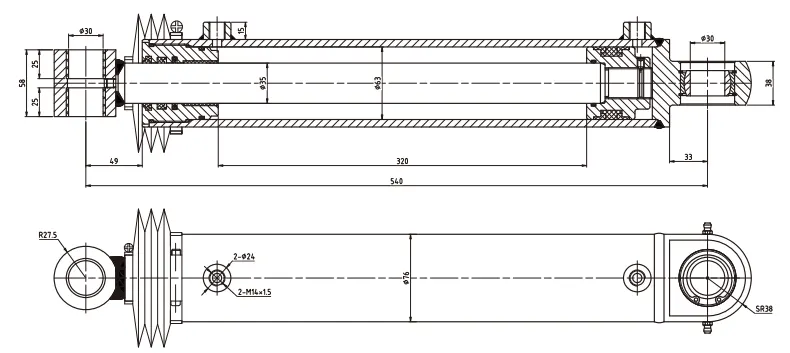
| Cylinder model | Specifications | Working pressure | Maximum withstand pressure | Trip | Installation distance | Ağırlık |
| EPYY11112012 | φ63×φ35×320 | 21MPa | 32MPa | 320 | 540 | 13kg |
High Performance Steering Cylinder for Aerial Work Vehicles: Precise Control and Durability
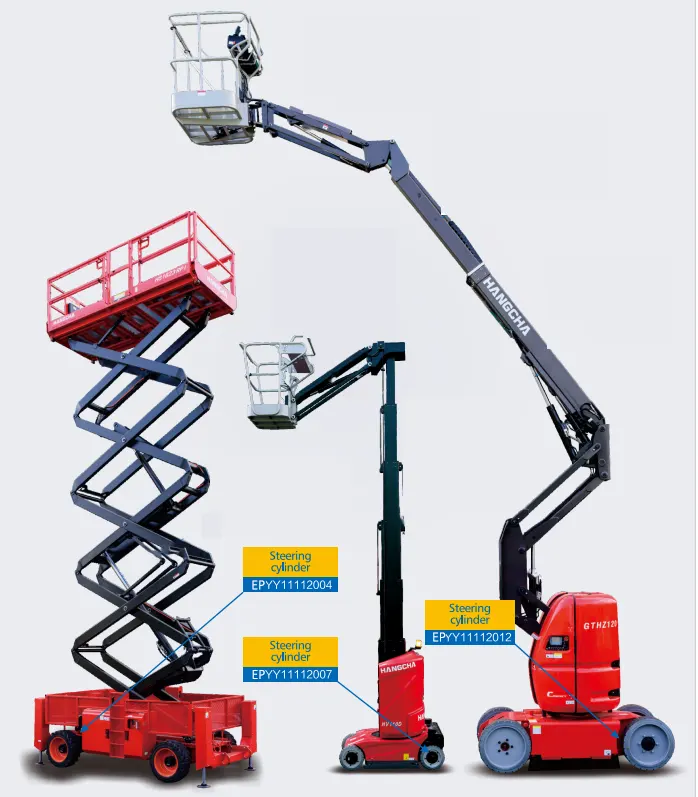
Features of Hydraulic Cylinders for Aerial Platforms
- High durability design: Carefully selected and rigorously tested hydraulic steering cylinders ensure long-term stable operation even under high loads and harsh environments.
- Precise control: Provides precise steering forces to help the driver achieve smoother operation, especially for equipment such as aerial work platforms and boom lifts.
- Customization options: Customized dimensions and interfaces are available to meet the needs of different types of aerial working vehicles, ensuring perfect compatibility.
- Strong carrying capacity: Suitable for a variety of heavy duty operations, can withstand high load and impact, to ensure stability and safety during operation.
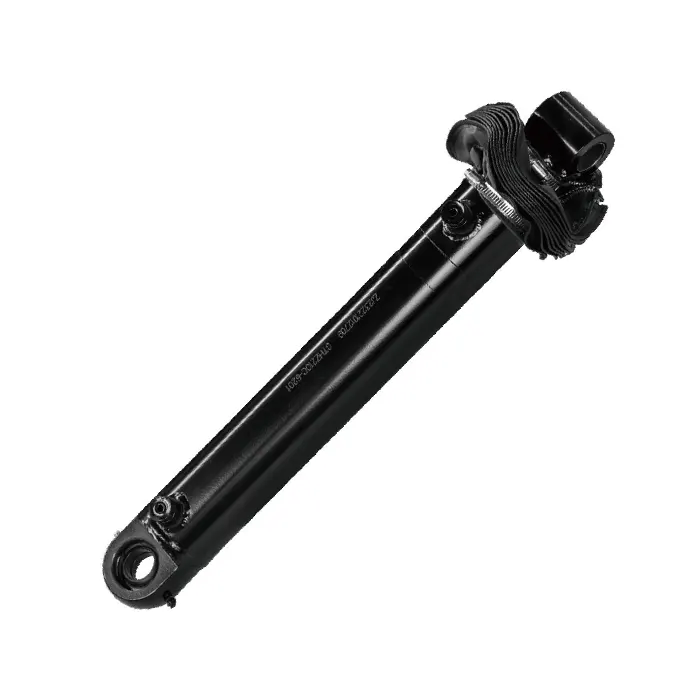
Scope of Applications of Aerial Work Platform Steering Cylinders
Our hydraulic steering cylinders are used in a wide range of high-altitude vehicles, including but not limited to:
- Boom Lifts (Arm lifts)
- Aerial Work Platforms
- Elevating Work Platforms
- Scissor Lifts
- Handlers (Forklift trucks)
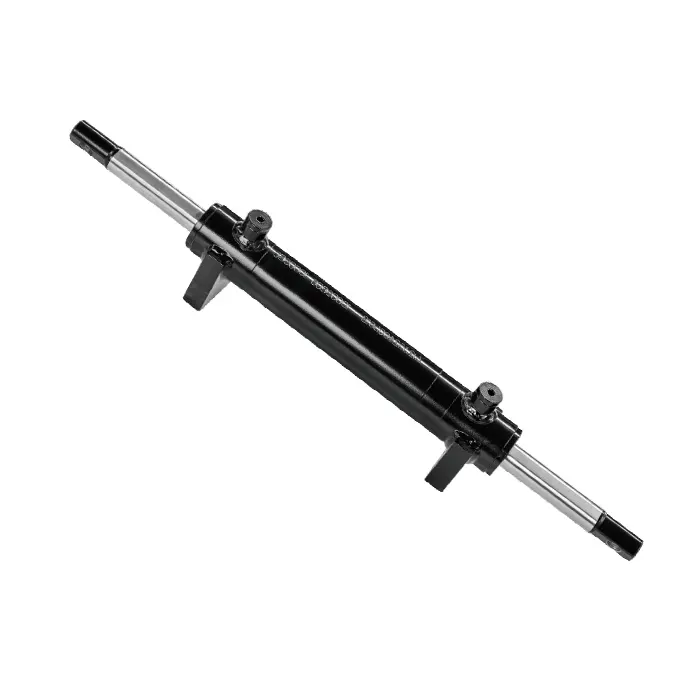
How Hydraulic Steering Cylinders Work?
Hydraulic energy conversion: Hydraulic system through the pressure and flow of hydraulic oil to transfer power. Hydraulic oil in the cylinder through the movement of the piston to realize the conversion and transfer of energy. The movement of the piston is transmitted to the steering mechanism of the vehicle through the oil pipe, changing the position of some components in the steering mechanism, thus realizing the steering of the vehicle.
Dual Action Cylinder: In a dual action cylinder, fluid can act on the piston from both sides. When the liquid is supplied to the first chamber, the cylinder extends; when the liquid flows out of the second chamber, the liquid needs to be supplied to the second chamber at the same time the liquid in the first chamber flows to the tank. The direction of liquid flow is controlled by a directional valve.
Role of seals: Seals ensure that the oil is circulated in the cylinder in a closed manner to prevent leakage. The oil in the cylinder circulates with the movement of the piston through the pressure relief device to maintain the normal working condition of the system.
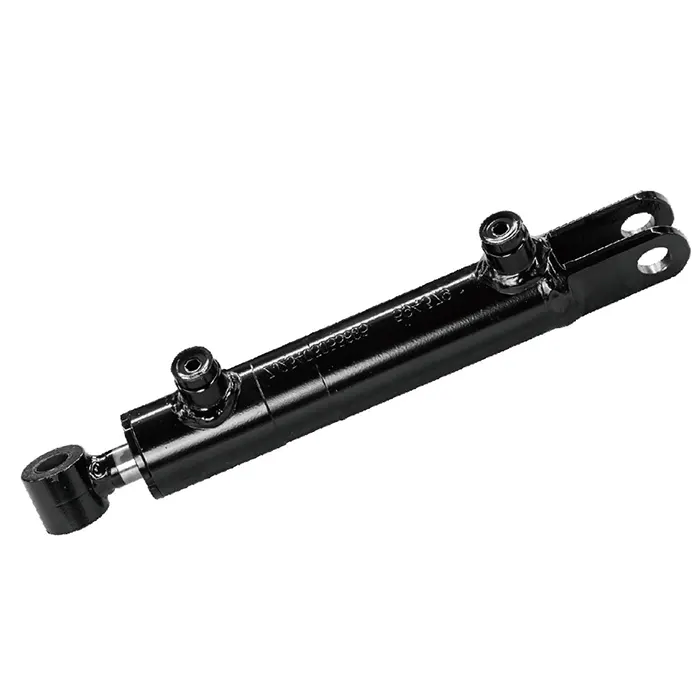
Ek Bilgiler
| Edited by | Sylvia |
|---|
Bloglar Güncellendi
German Gearbox Lubrication and Maintenance
As a crucial part of mechanical equipment, the gearbox's lifespan and performance have a direct impact on the system's overall operational efficiency. Maintenance and lubrication are crucial steps in ensuring the gearbox operates steadily over the long run. The Value...
The Working Principle of the Speed Reducer in Belgium
The reducer is an indispensable key equipment in modern industry, widely used in various mechanical transmission systems. Understanding the working principle of the reducer not only helps to select and use the reducer correctly but also improves the operating...

